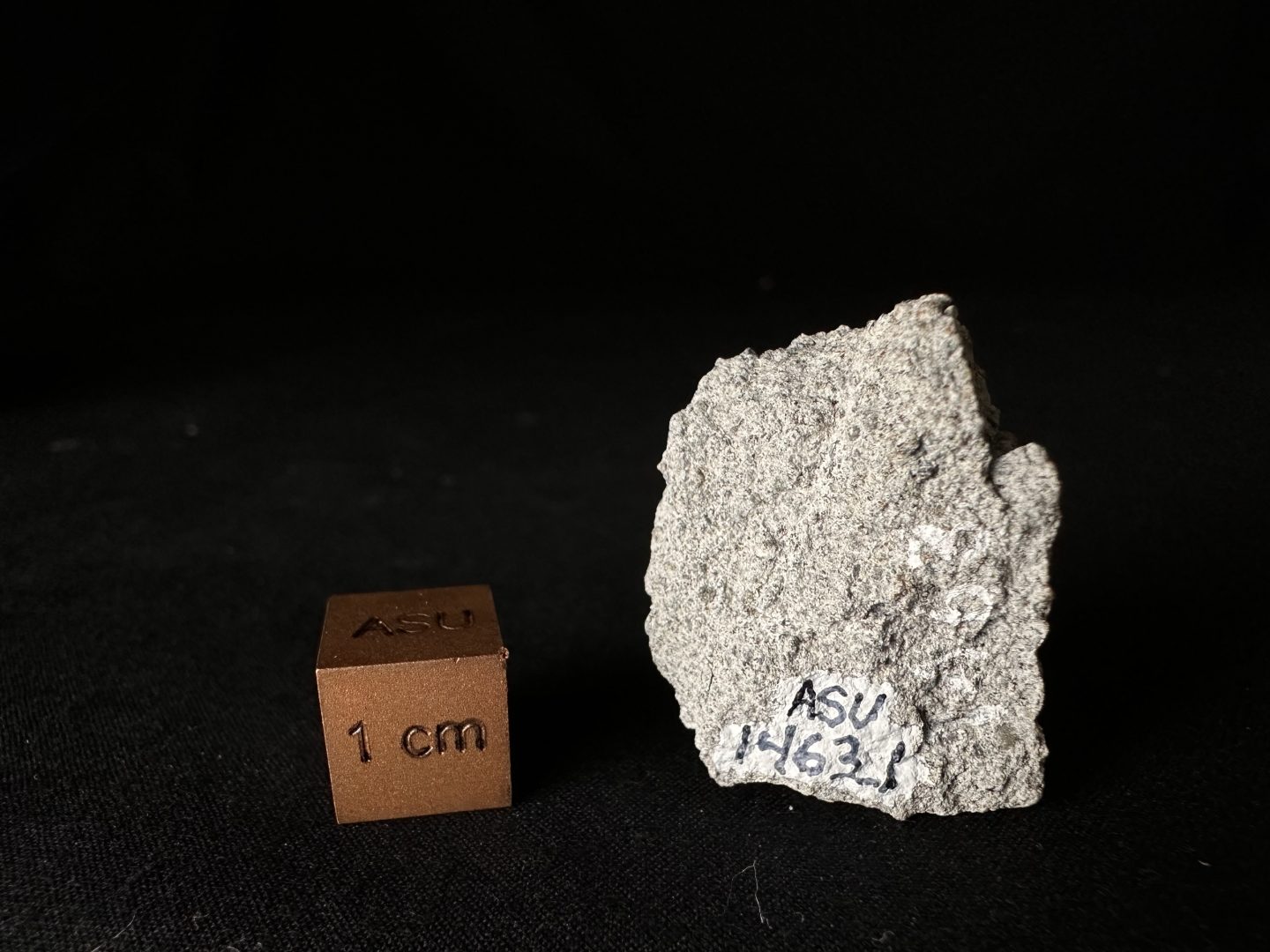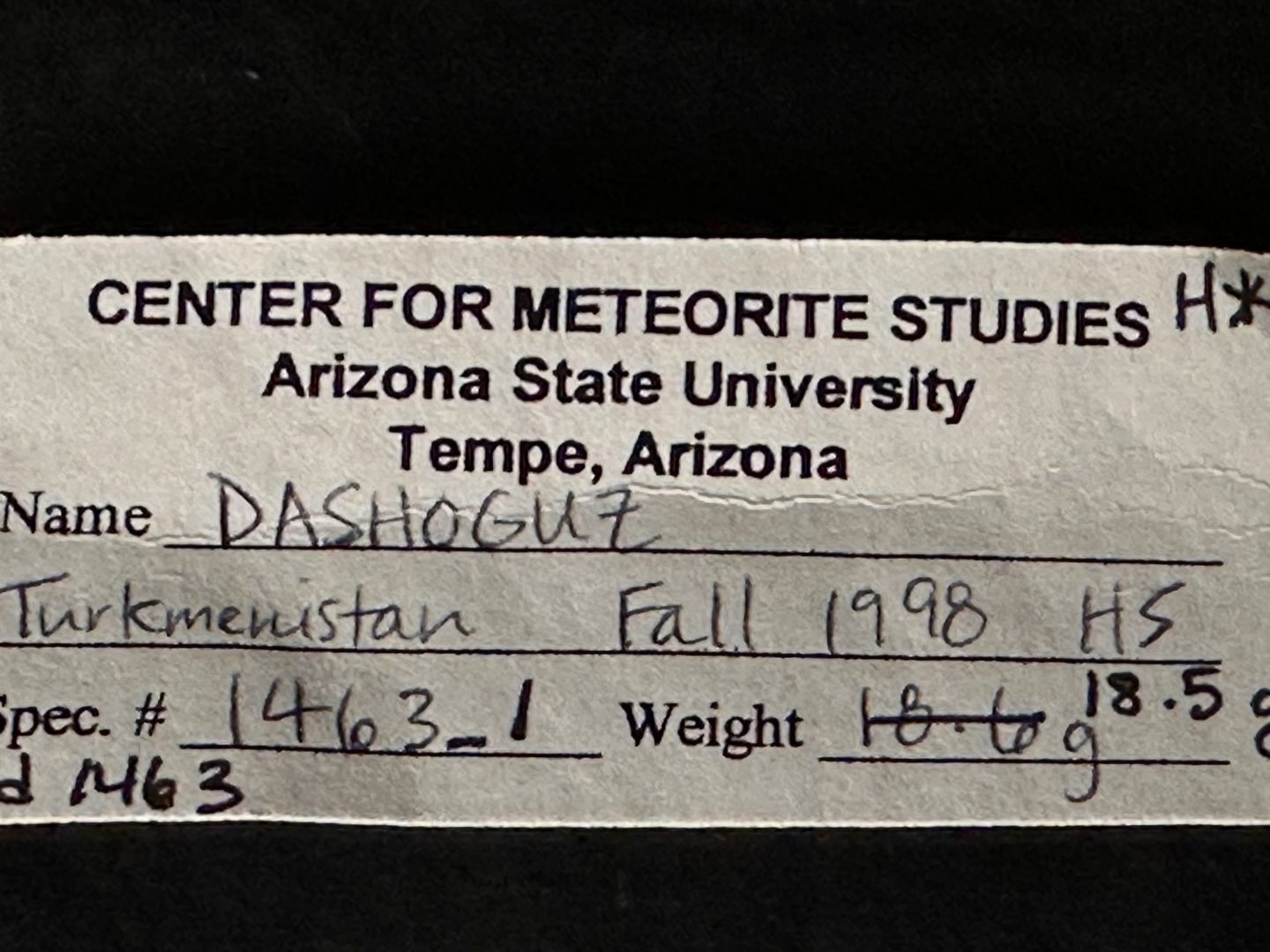Dashoguz
September’s Meteorite of the Month is Dashoguz, an ordinary (H5) chondrite that fell September 5, 1998.
The meteorite’s fall was witnessed near the city of Daşoguz, in northern Turkmenistan, but it took several weeks of searching to find a very small crater containing just over 15 lb (7 kg) of the meteorite – all that would ultimately be recovered. Interestingly, Daşoguz roughly translates to “stone spring” in Turkmen.
Dashoguz is an H5, meaning an ordinary chondrite from the H group that is petrologic type 5. As defined by the Meteoritical Society, the high-iron (H) chemical group of ordinary chondrites is distinguished by their high siderophile element content, relatively small chondrules, and oxygen isotope compositions that are closer to the terrestrial fractionation line than those of other ordinary chondrites. Petrologic type 5 designates chondrites that have been metamorphosed under conditions sufficient to homogenize olivine and pyroxene, convert all low-Ca pyroxene to orthopyroxene, cause the growth of various secondary minerals, and blur chondrule outlines.
Dashoguz is one of only 6 meteorites recovered in Turkmenistan, all of them ordinary chondrites.
All photos © ASU/BCMS.

